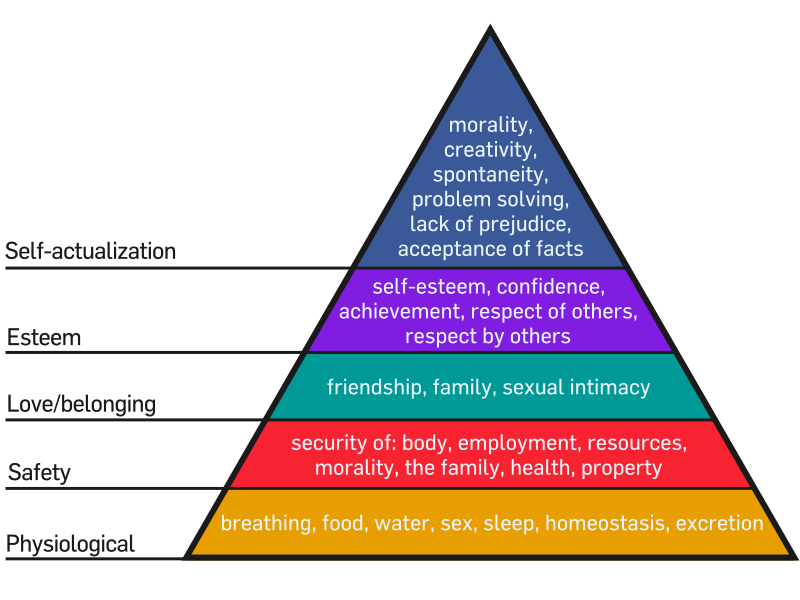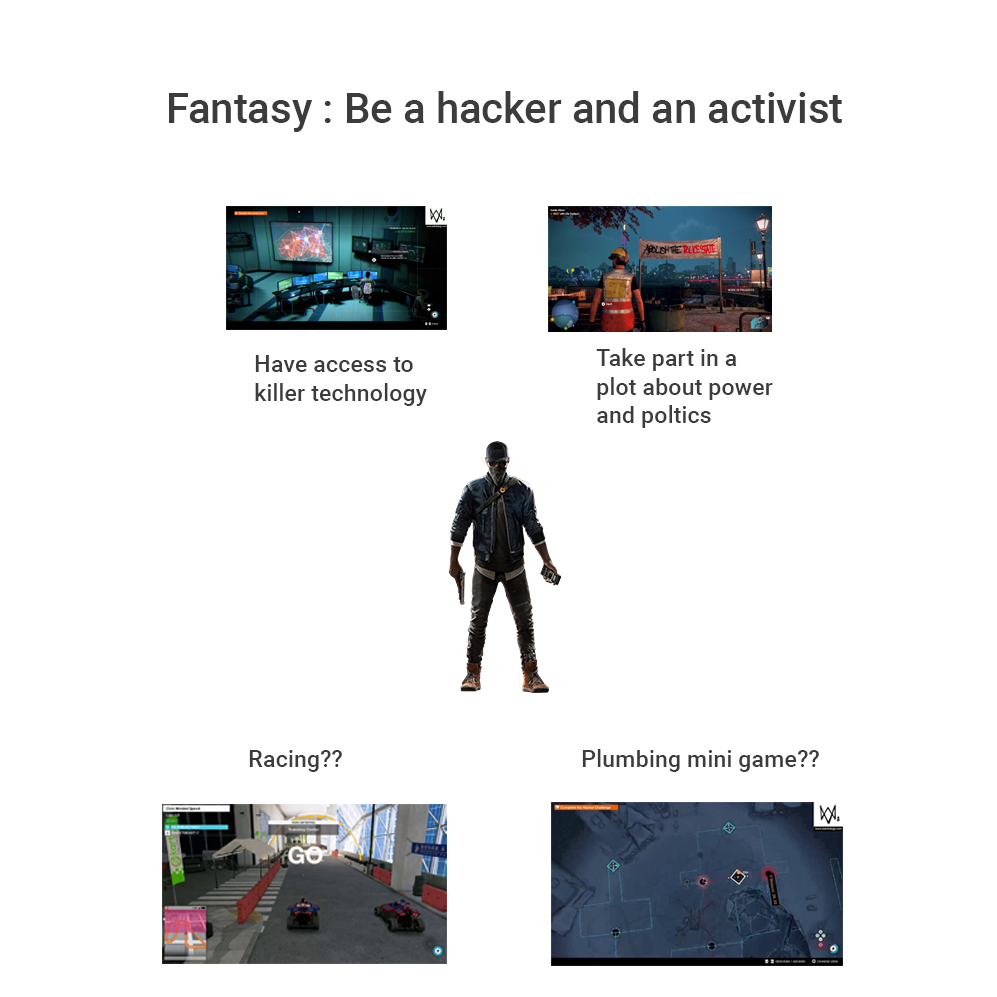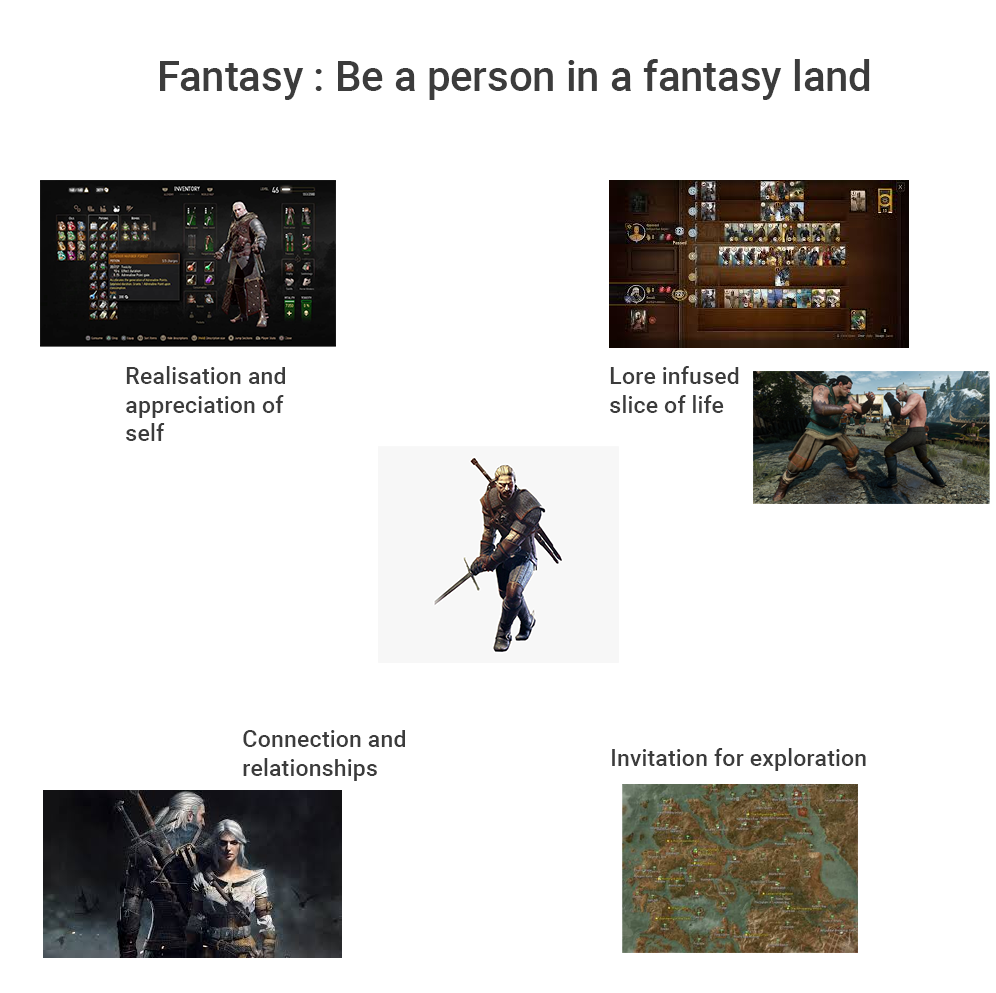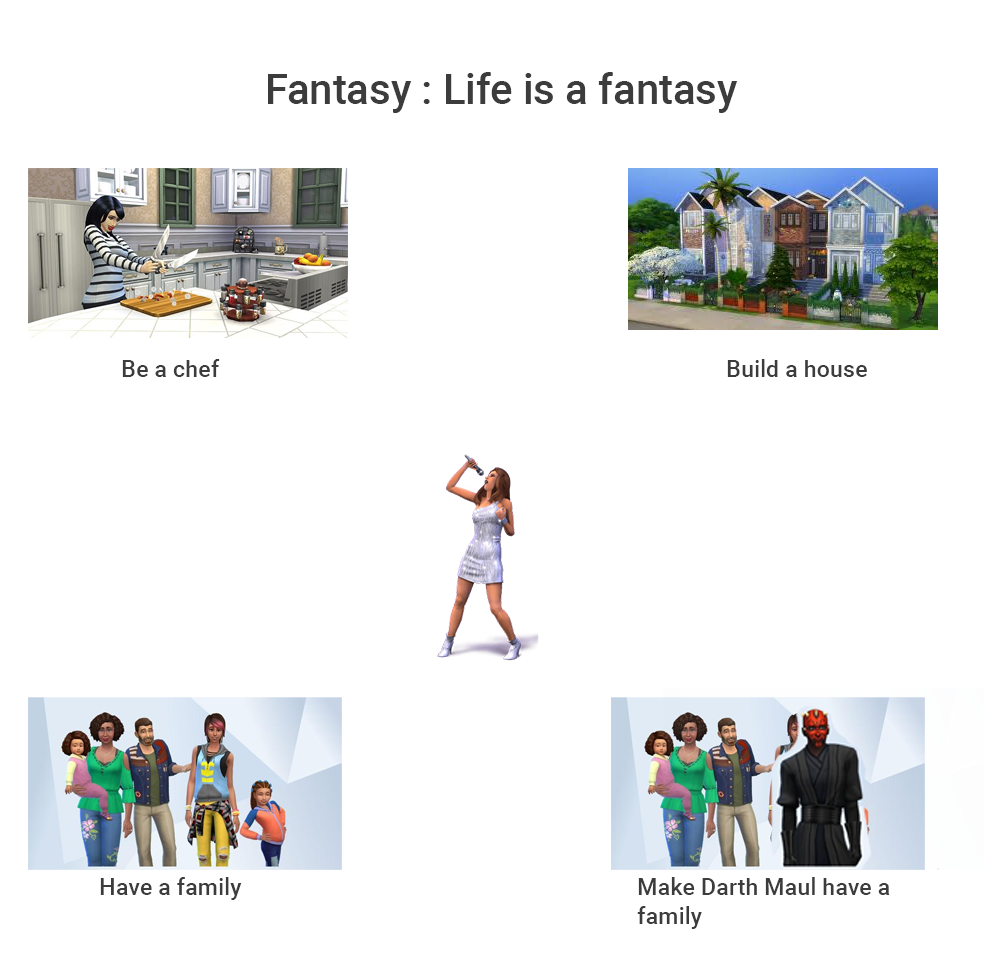Player Motivations and Video Games
How psychology can affect and influence game design

In a recent design test that I had received, I was asked a simple question — “What is a toy, and what is a game and what is the difference between the two?”. While the design test had a time limit and needed to be submitted, this question managed to give me a few sleepless nights after that. There was no way that the answer could be in the half-page theory I submitted, so I will be attempting it here again.
Toys versus games, and what they mean to us
A toy, by its definition — “an object for children to play with”
A game, by its definition — “an entertaining activity or sport, especially one played by children, or the equipment needed for such an activity”
Looking at the definitions of each from the dictionary, we might see that they are rather vaguely defined to begin with. Both contain the word “play”, and both seem to be directed towards children as the audience for the activity. Yet toys and games are something we all enjoy throughout our lives, from childhood to old age. Taking away the part concerning children, we may develop an understanding that there is a deep relation between toys and games.
So I landed on a new question:
What is the relationship between a toy and a game?
As someone who owned a huge collection of WWE action figures and also got to see the inner workings of the creation of WWE Mayhem, I realised that the difference is in layers.
Drive to create novelty v. ambition to accomplish objectives
From my understanding of time spent with toys, they are simply tools. A toy, by nature, is a tangible tool. A tool is simply meant to carry out a function, and the function of toys is to be an outlet for creativity.
From accomplished theory, we know that creativity is one of the core human needs, assigned as it is to the top of the famous hierarchy pyramid.

Creativity is known to have deep ties with Intrinsic Motivation (read the research here), along with other known human needs such as Intellectual Need and Curiosity.
Besides creativity, another intrinsic need that humans have displayed is the need for respect from other humans. This may be in a social or professional setting, yet respect has always been a driving factor for us. Committing deeds to gain respect has always been classified as extrinsic motivation, as it is an external resource. Humans can only respect deeds that have universal acknowledgment in the community and are not purely individual transactions. This leads us to understand that wanting to earn respect is linked with accomplishing objectives that are defined collectively by the community as respectable.
Through this explanation, I wanted to highlight the difference and the relationship between two particular needs that have an influence over an individual’s intrinsic and extrinsic motivations.
When does a toy become a game?
From the previous explanation, it is evident that toys are meant to satisfy creative needs and are heavily associated with intrinsic motivations. At the same time, assigning objectives via rule sets (especially the “rule to win”) create extrinsic motivations.
The simple difference between toys and games is the existence of rule sets.
A ball can bounce, spin, sail, or even blow up. It is one of the easiest toys to influence and the number of things one can do with it is limitless. A toy is governed by no rules other than the rules of the sandbox, and for a ball, there are no rules except the rules of physics (sandbox).
With a ruleset in place and an objective (the rule to win), the simple toy has been turned into a game. Despite the ball being influenced in many ways, everyone participating has an objective now — put the ball in the goal.
The complexity of human needs
While we discussed the two types of motivations, we know that it is not as simple as that. While manipulating a ball may be intrinsically motivated and wanting to put it in a goal may be extrinsically motivated, it is a personal choice (intrinsic motivation) to even want to win a match in the first place. Hence there are different motivations driven by different needs, which all keep changing as individuals progress throughout the activity.
Self Determination Theory
One of the key works in psychology, known as the Self Determination Theory (SDT), states that three factors are important in regulating intrinsic motivation in individuals pertaining to the activity in which they participate. These three factors are:
- Autonomy — the ability to make your own decisions without being controlled by anyone else
- Competence — the ability to do something successfully or efficiently
- Relatedness — connection by reason of an established or discoverable relation
The theory also states that it is not as simple as maximising these three factors to subsequently maximise intrinsic motivation for participants to want to excel at an activity. The theory states that there is a complex relationship between intrinsic and extrinsic motivation and that either has an influence on the other, a composition that keeps changing.
What is clear though is that all these three factors must be aligned to player needs rather than standing alone to help build an individual’s feeling of satisfaction with the experience. So how can they be used in video games?
Autonomy; it's not freedom
When autonomy is mentioned in the context of video games, designers are often inclined to believe it means the number of things to do. In truth, it has been discovered that autonomy has not to do with the number of things to achieve but rather ways to build agency towards satisfying player needs.




Each of these games has a set of activities that are aligned with the fantasy. Whatever activity players choose at that moment, any activity they pick up still aligns with the fantasy. Whenever there are activities in the game that do not help players satisfy their own needs, they become noise.
Action Item #1 — Choose your mechanics and features to satisfy player needs.
Some of the core player needs are living the fantasy and accomplishing feats. Games and gameplay must cater to a spectrum of solutions for the objective that can all satisfy these two needs. While a game may satisfy multiple needs, it is always recommended to bucket them into primary and secondary needs and balance the presence of the mechanics accordingly.

Action Item #2 — Allow a wide spectrum of approaches to achieve the same objective.
Continuing from Item #1, player needs are satisfied by achieving objectives and it is therefore beneficial to have a concrete set of unchanging objectives to be achieved through different methods. While it may popularly be known as replayability, having the possibility of multiple approaches to the same objective allows players to find satisfaction in the choice-making process itself. Considering that we don’t know if they’ll truly exhaust the choice of options, this is the correct path.
Action Item #3 — Make the solution set small enough at the start to not paralyse the player.
When it comes to autonomy, it’s best to find an adequate amount of things to present at a time. Too few will not invite exploration, too many will cause paralysis from having to decide.

Even though the game may bank on the extreme depth of choices, it’s always best to start the ball rolling with a smaller, but still adequate number of choices before growing into the true experience.
Action Item #4 — Make the gameplay a toy.
If we look at Mario, even after stripping away the complex ruleset and game systems, it is still fun to control Mario as he skips and jumps without an objective. It is also just as fun and tireless to control Spider-Man as he aimlessly swings from building to building. These are all great examples where, if the core components of pure real-time gameplay are engaging, players will find them fun and delightful in themselves without their overlaying ruleset.



Games can be fun even without their complex external objectives. Often times, the sandbox is enough for fun. Source: Author.
Competence
While this is considered a simpler point where we understand that players need or want to get better at playing games, how does that actually translate into designing games? Before diving into some action points, it would be good to take a quick look at how humans actually get better at something.

While this diagram explains the loop well, it would be better to break this down into a simpler loop for the sake of deriving action items.
What this tells us is that to gain competence, individuals need repetitions and a punishment/ reward mechanism when experimenting. It also tells us that acquiring competence is a loop, which means that it will be repeating.
Action Item #5 — Make the outcome of decisions clear.
It is important for clear outcomes and even clear indications for the mental models of individuals. The reward/ punishment for decisions is important for people to form mental models (the learning process) and it helps facilitate the learning process when rewards and punishments are easier to perceive.

Action Item #6 — Have a ceiling for skill.
Repetition and practice are important parts of gaining competence. If the skill ceiling is too low, there may not be enough depth to have a meaningfully invested experience.


There is a lot of investment into going from the dexterity shown on the left, to that on the right, even though it for the same objective. Source: Author.
Action Item #7 — Make the high skilled actions digestible to low skilled players.
We touched on the point of gaining respect from peers as a need that fuels intrinsic motivation. Gaining respect or a sense of accomplishment comes from performing high dexterity, highly skilled actions. These actions should be easily understood by players who don’t have the skill yet, so they can add the goal to their mental model and have a finish line for their repetition process.
The same example above can highlight that while the dexterity and skill required for both manoeuvres are vastly different, their outcome is the same which makes these highly skilled action easy to digest. In Counterstrike: Global Offensive (CS:GO), where the objective is to kill, highly skilled manoeuvres may notch 2 kills in one action which is still easy to understand. Often times, the objectives achieved by highly skilled actions are simply much greater variants of the base objective, which makes them easy to digest.
Relatedness
With competence, we see how people add or modify parts of their mental models via learning. While relatedness means the ability to connect, people can only connect with something when they can associate it in their mental models.
Action Item #8 — When designing for emotions, relate to existing anecdotes.
While games strive for novelty, it is important to realise that people will perceive things only with respect to what they already know. When they see something unknown, they will compare it against what they already know.
*Reference for study


Action Item #9 — Talk to the players.
While games are not (yet) living entities, it has become an expectation that games talk to us. Through hints, cues, and a tone of language, games are able to craft a concrete personality that feels like it is an entity in itself. This can be achieved through the user experience writing and the sound effects of the game.

In Hellblade: Senua’s Sacrifice, Senua’s internal voices are not only meant to tell us what she is suffering from but also attempt to induce the same paranoia, anxiety, and tension in the player that the character feels. They also serve the purpose of suggesting solutions or encouraging players to continue with the solutions they are trying during gameplay which is another way for the game to talk or talk back to the players.

Blossom Blast Saga also chooses a phrase that suggests to players that they may have outsmarted a very complex puzzle by thinking hard about the solution, rather than using a phrase like “You’re amazing” which highlights talent over skill. This highlights not only the importance of a game to have a voice but also that the tone gives the game a personality that players can relate to.
Action Item #10 —Involve avenues of Inter and Intra player communication.
Today’s video games aren’t in a silo. They exist in a broader space; communities and groups of people that come together around the game due to genres, platforms, or shared experiences. It has become important for games to establish channels of communication between players who play the games and between players who play the game and want to involve others who do not play it yet. While this has become simpler for multiplayer games with dedicated lobbies, chatrooms, and other channels inside the game, it is recommended to have a simple Reddit thread or a Discord channel as collective digestion of experiences has shown increased relatedness amongst groups of players.
Conclusion
As psychologists and researchers work closer and closer with designers in the industry, it is quite clear that there are many actionable points for designers, found in years of existing research. While understanding player needs will always remain an output of research and player testing, existing research is a good starting point during the design process. For a final study resource, I have included two GDC talks and an article that inspired my writing.
Article:
Introduction to Player Motivation by Nicolas Kraj
GDC talks:
Source: YouTube.
Source: YouTube.
